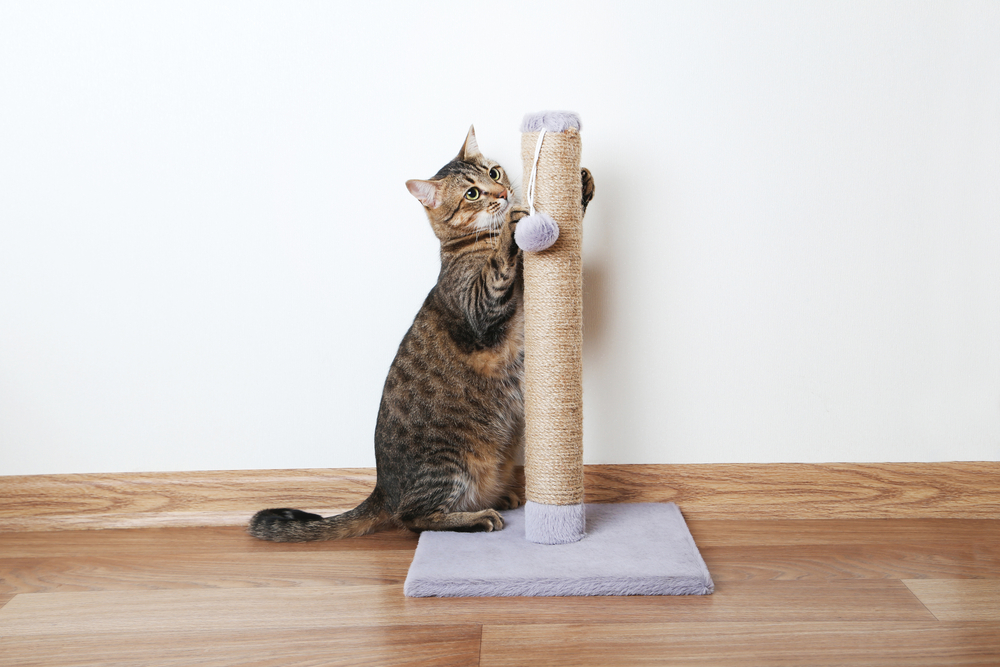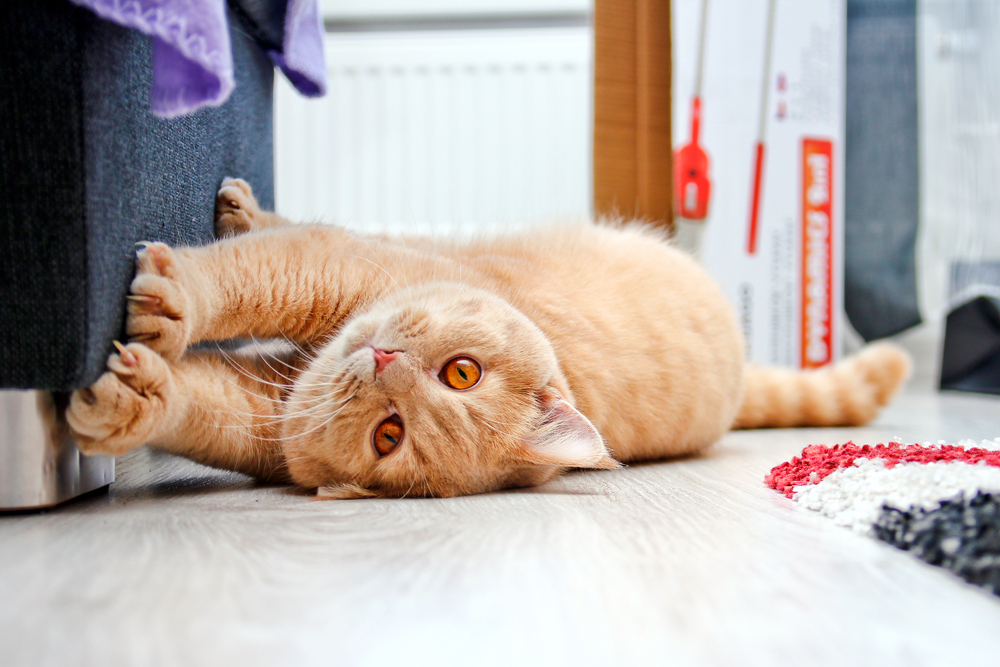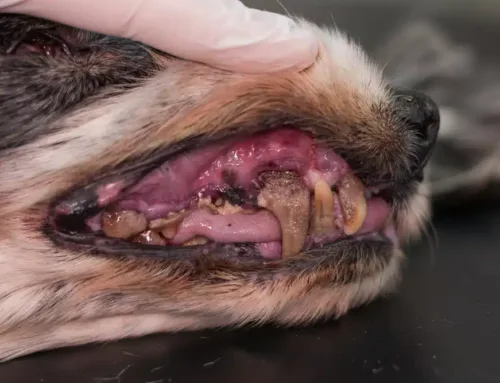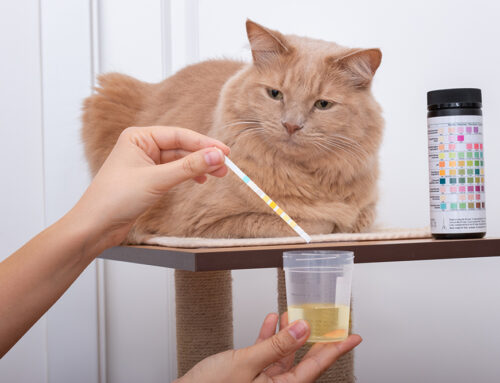Scratching is an essential behavior for your feline friend, who should not be punished if they claw your curtains, rugs, or furniture. Refrain from yelling, swatting, or spraying them with a water bottle and instead avoid damaging your relationship by learning why your cat needs to scratch, and how you can encourage them to scratch in acceptable spots.
#1: Scratching provides your cat with an energy outlet
House cats are often considered lazy, mainly because they do not have nearly as much opportunity to exercise as outdoor cats. Indoor cats have no need to hunt for their meals or defend themselves against predators, so they do not expend much energy unless they have natural exercise outlets.
A scratching post with a climbing tower is a great way to entice your cat to scamper up and down and burn off energy as they scratch and climb. Plus, scratching not only helps your cat remain active, but also helps prevent obesity—an all too common problem in cats—through regular exercise.
#2: Scratching allows your cat to care for their claws
Your cat’s nails are constantly growing, and if your cat does not have adequate scratching opportunities, they can suffer from overgrown nails that curve into their pads. Regular scratching on abrasive surfaces such as sisal, wood, corrugated cardboard, and carpet can help prevent nail overgrowth.
Regular scratching also removes the rough outer nail surface that can break and become jagged, and cause pain for your cat when they retract the nail into the paw.
#3: Scratching helps your cat communicate
Cats are highly territorial creatures who can become stressed when others encroach on their domain. Although cats communicate with people with meows and other vocalizations, they communicate with each other through body language and pheromones. They impart pheromones to mark territory and let other cats know to back off by scratching outer boundaries. For example, your cat may scratch window and door frames to inform other cats about their territory, especially if stray cats are prowling around. The scent glands in their paws release pheromones during scratching, so claw marks are essential for helping keep the peace in the feline world.
#4: Scratching helps your cat loosen up
After waking up from a deep sleep, nothing gets you moving better than a good stretch. When your cat stretches to their full length and scratches a vertical or horizontal surface, they flex many muscles along their spine, in the shoulders, and in their legs. Your cat may not have to leap into action to escape from predators or immediately set off on the hunt, but deep stretching and scratching allows them to remain limber and flexible.
#5: Scratching fulfills an instinctual behavior for your cat
Scratching is to cats what sniffing is to dogs—a relaxing, instinctual behavior that needs an appropriate outlet so your cat maintains their mental health and happiness. Pets who are not given the opportunity to fulfill instinctual needs can suffer from a multitude of health and behavior issues. Cats who are not allowed to scratch become stressed, which can lead to feline idiopathic cystitis, aggressive behavior, overgrooming, inappropriate elimination, and an array of other problems.

How to encourage your cat to scratch appropriately
Scratching is a necessary part of life for your feline friend, so they need appropriate outlets to exercise this behavior. Instead of trying to stop their scratching, encourage your cat to scratch in an approved area by:
- Making approved scratching surfaces appealing — Pheromones are important in your cat’s world, and you can use them to entice your cat to scratch on an approved surface. Spritz pheromone spray on a scratch pad or post, or apply a bit of catnip to attract your cat.
- Trimming your cat’s nails — Regularly trimming your cat’s nails—typically every six to eight weeks—will prevent overgrowth and the need to scratch in inappropriate areas.
- Providing plenty of interaction — Bored cats can turn to scratching, so spend plenty of time petting, grooming, and playing with your pet to prevent boredom.
- Offering varied environmental enrichment — Indoor cats who have no opportunities to meet their physical and mental needs can become stressed and anxious, which can lead to clawing unapproved surfaces. Give your cat the freedom to be a cat by providing climbing posts, lookout towers, hiding spots, scratching surfaces, and prey-like toys.
If your cat is scratching in unacceptable areas, they may be stressed or suffering from an illness or injury. Schedule an appointment with our Gentle Vet team to get to the bottom of your feline friend’s scratching problem.








Leave A Comment